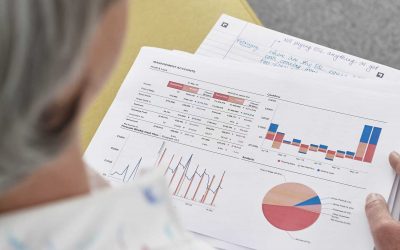What’s the most effective way of controlling spending in your business? Previously I have talked about whether or not a budget is an effective tool to control spending and concluded that it’s not. A budget is a tool for building an overview of strategy and assessing potential changes, not for controlling behaviour.
I had originally been planning to post about Zero Based Budgeting. This is a planning process where every cost has to be examined and justified before being allowed into the budget. But personally I find this time consuming and really not that rewarding so it’s difficult to get enthusiastic about it!
So instead I’ve been thinking about how it’s stupid to hope that you can control spending behaviour with a policy. Take lockdown rules as an example: the Government could have just set out the rules and hoped that the population would obey, and probably had minimal success. Instead they have relentlessly evangelised about the why behind their policy – to include all of the potential “decision makers” in their vision.
In any business the same needs to happen to successfully achieve the objectives, whether they be brand building or cost cutting. So how might you go ahead making this happen?
You need to involve the whole team, whether they have spending power or not, to build a “cost conscious” culture.
Ultimately you could say this starts with hiring the right people who understand the responsibility of spending wisely, but in the shorter term what about setting out a framework for decision making:
- Is this spend really necessary?
- Does it provide good value for money, especially compared to a cheaper alternative?
- Does this create value? That’s in terms of something the customer values, not just something we like!
- Does this achieve the goals we are working towards? So a higher cost could be an acceptable trade off for recyclable supplies, reduced carbon emissions, etc.
Communicating this allows the whole team to play their part in making spending effective, which really helps people stay motivated in uncertain times.
Similarly, communicating with the team how the business makes profit and/ or generates cash enables everyone to focus on directing efforts to make more.
That could be focussing sales & marketing efforts on the right activities that deliver good quality leads. Or focussing on sales that bring in better profit margins.
But equally it could be focusing on selling to customers who pay on time. Or structuring deals so that the business is not paying for supplies now that customers will not pay for for several more months.
While spending can’t be controlled by capturing a number on paper in a budget, this highlights the importance of having good information about your business.
Knowing how profit margins compare between products and customers, how long customers actually take to pay and having a picture of the current financial performance allows you to assess the effects of changes.
You can’t always make the right decision because you can’t be certain about the future but you can make better decisions.
If you feel you need better financial information to help your business grow successfully then contact me for a free, confidential chat, or have a look at other advice I’ve published about making your budget more effective.




